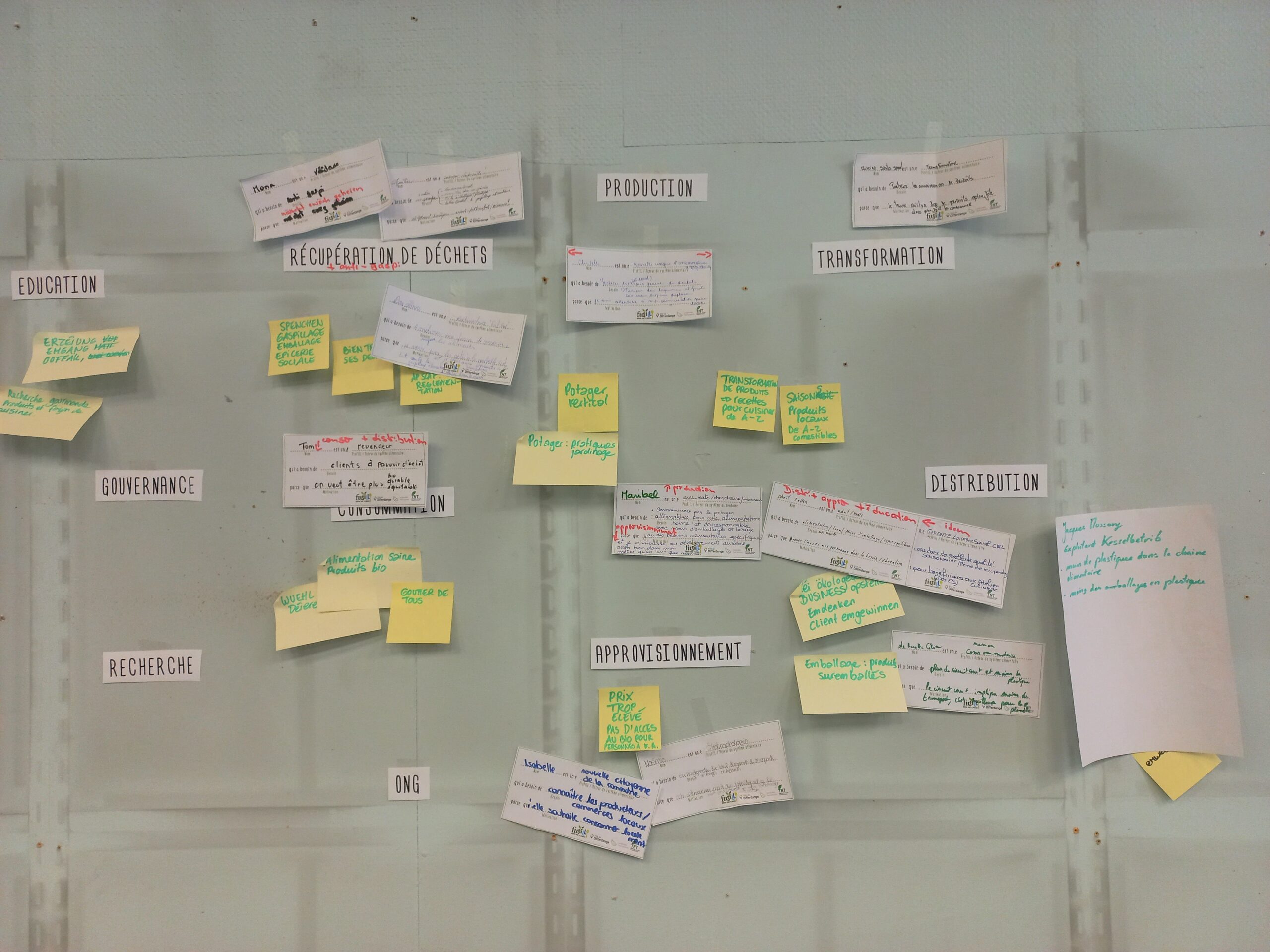As part of the FUSILLI project, Differdange created a Food Council. In Luxembourgish, it is called “Ernärungsrot”, however we use the French name, Conseil Alimentaire, as well. Given the fact that Luxembourg has three official languages, namely; Luxembourgish, French, and German, we decided to use the Luxembourgish and French name, as these are the most widely used official languages in Differdange. However, on the street, you will also hear anything from Portuguese to Italian to Slavic languages and many others.
We published a call for participants in Luxembourgish, French, and English in order to reach a wider audience. Citizens mainly responded to the call for participants, and therefore we wrote an invitation letter for stakeholders and delivered these personally.
| Stakeholder | Number of participants |
| Citizens | 6 |
| Producer | 1 |
| Distributor – shops | 5 |
| Distributor – hotel / restaurant / café | 2 |
| NGO | 1 |
Table 1: Participants to the first Ernärungsrot of Differdange
The first meeting of the Ernärungsrot took place on April 25th 2022 in the Maison Moderne; the city bought the building last year and it is in process of being transformed into a social meeting point. The three Luxembourgish project partners in FUSILLI (the City of Differdange, TNT ASBL, and the University of Luxembourg) set up and guide the Ernärungsrot.
The participants are very enthusiastic which showed already in the introduction round. We started the meeting with an explanation of a Food Council, our expectations from the participants, and the expected outcome.
For the introduction of the participants, we first explained the Food System and asked them to tell whom they were, which player of the food system, and their motivation to participate in the Food Council. As said, the enthusiasm was big and the introduction round took quite a bit longer than we had foreseen.
After a break, we continued with a practical exercise, liberally taken from Design Thinking. We asked to participants to express their wish for the food system, their need in the following form:
User name is user characteristics who needs user need because insight
The tendency for needs was around local producers, less (plastic) packaging, and gardening techniques for the production of fruits and vegetables.

In the following meetings, we will continue the design thinking process and focus on the problem, find solutions, and from there derive a vision and pilot projects.
Credits for images: City of Differdange
